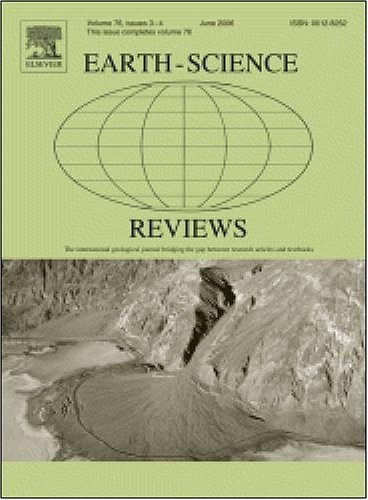Soil bulk density and porosity connecting macro- and micro-scales through geometry.
IF 10
1区 地球科学
Q1 GEOSCIENCES, MULTIDISCIPLINARY
引用次数: 0
Abstract
Soil bulk density (BD) is a macroscopic indicator frequently used to infer the soils' pore system, a fundamental attribute of terrestrial environments that significantly affects processes such as infiltration, water retention and plant root development. Additionally, BD is essential for assessing the storage of various materials in soils and sediments, including carbon and nutrients. High bulk density, often a consequence of soil compaction, represents a form of soil degradation that diminishes the soil's functional capacity. Therefore, effective management of soil BD is crucial for improving agricultural yields, safeguarding ecosystem services, preventing degradation, and preserving the overall integrity of the Earth's system. This review synthesizes recent research on the packing behavior of granular materials to clarify the emergent property of soil BD. The findings yield an empirical model that links packing fraction to the shape and size ratio of particles. The results demonstrate that the model accurately captures the frequently observed exponential decrease in soil BD with increasing soil organic matter (SOM) content. While it is widely recognized that particle density influences BD, the analysis indicates that grain shape exerts a considerable effect, followed by the particle size ratio in granular media. The insights from this study aim to transform the perception of BD from a static notion to one that acknowledges how changes in the morphology of soil constituents, driven by factors such as root growth and decomposition, can result in variations in BD. As a result, BD may become increasingly sensitive to feedback from climate and land use changes as the geometry of SOM evolves.
土壤容重和孔隙度通过几何学连接宏观和微观尺度。
土壤容重(BD)是土壤孔隙系统的宏观指标,是陆地环境的基本属性,对土壤的入渗、保水和根系发育等过程具有重要影响。此外,生物多样性对于评估土壤和沉积物中各种物质的储存至关重要,包括碳和营养物质。高容重通常是土壤压实的结果,是土壤退化的一种形式,会削弱土壤的功能。因此,有效的土壤BD管理对于提高农业产量、保护生态系统服务、防止退化和保持地球系统的整体完整性至关重要。本文综述了近年来关于颗粒材料的堆积行为的研究,以阐明土壤BD的紧急特性。研究结果产生了一个将堆积分数与颗粒的形状和大小比联系起来的经验模型。结果表明,该模型能较准确地捕捉到土壤有机质(SOM)随土壤有机质含量增加而呈指数下降的现象。虽然人们普遍认为颗粒密度影响BD,但分析表明颗粒形状的影响较大,其次是颗粒介质中的粒度比。本研究的见解旨在将土壤肥力从静态概念转变为承认由根系生长和分解等因素驱动的土壤成分形态变化如何导致土壤肥力变化的概念。因此,随着土壤肥力几何形状的演变,土壤肥力可能对气候和土地利用变化的反馈越来越敏感。
本文章由计算机程序翻译,如有差异,请以英文原文为准。
求助全文
约1分钟内获得全文
求助全文
来源期刊

Earth-Science Reviews
地学-地球科学综合
CiteScore
21.70
自引率
5.80%
发文量
294
审稿时长
15.1 weeks
期刊介绍:
Covering a much wider field than the usual specialist journals, Earth Science Reviews publishes review articles dealing with all aspects of Earth Sciences, and is an important vehicle for allowing readers to see their particular interest related to the Earth Sciences as a whole.
 求助内容:
求助内容: 应助结果提醒方式:
应助结果提醒方式:


